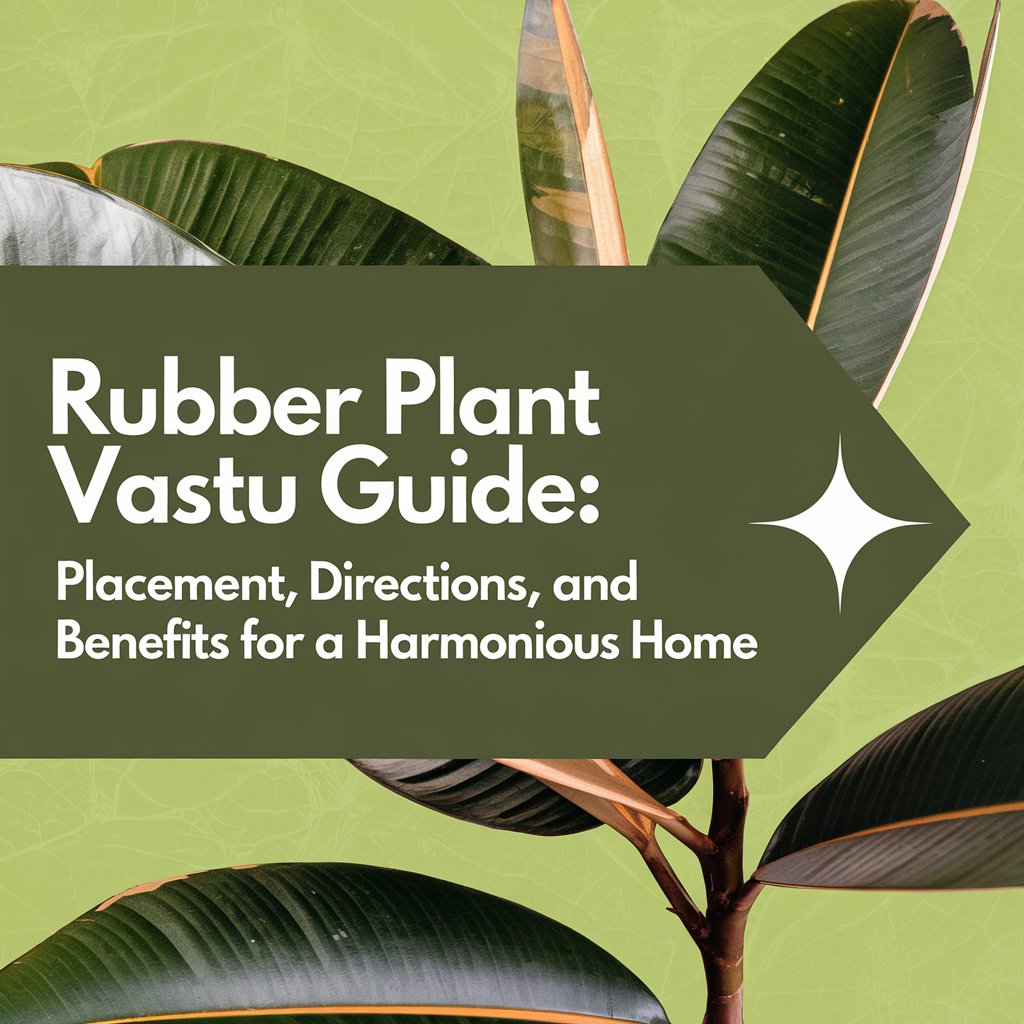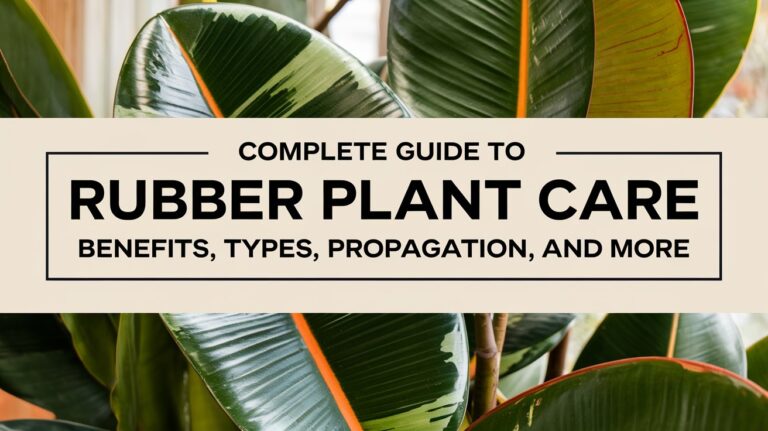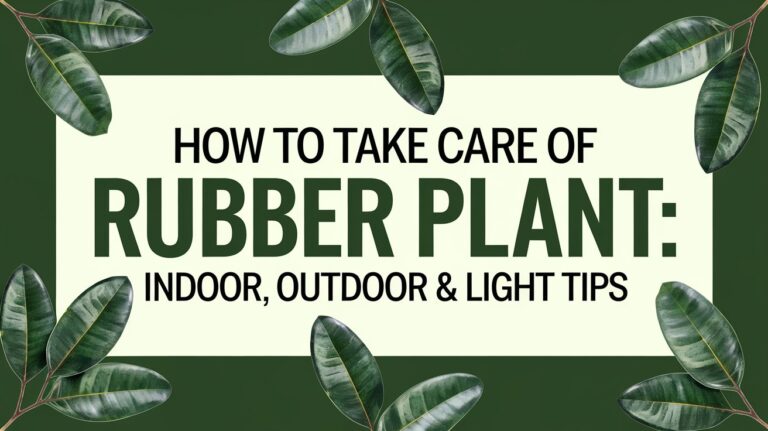When it comes to creating a peaceful and harmonious living space, Vastu Shastra often plays a vital role in Indian households. While many elements contribute to positive energy in your home, plants are one of the simplest and most effective ways to infuse vibrancy and balance into your surroundings. Among these, the rubber plant (Ficus elastica) has gained immense popularity—not just for its air-purifying qualities, but also for its significance in Vastu.
If you’re wondering about the rubber plant Vastu direction, placement tips, and benefits, let me share my insights from experience and research. Let’s explore how this stunning indoor plant can transform your home into a sanctuary of positive energy.
Why the Rubber Plant is Important in Vastu
The rubber plant as per Vastu is considered a powerful symbol of wealth, growth, and prosperity. Its large, round leaves resemble coins, which is why it’s often associated with financial abundance. Besides its aesthetic appeal, the plant plays a dual role—enhancing air quality while also harmonizing the energy flow within your home.
One of the best things about the rubber plant according to Vastu is that it works beautifully in both modern and traditional interiors. Its presence creates a soothing environment and fosters a sense of well-being, making it a favorite for indoor décor.
Where to Keep Rubber Plant as Per Vastu
1. Ideal Placement in the Home
The placement of the rubber plant significantly influences its positive effects. Here’s where you should keep it:
- Living Room: Positioning a rubber plant in the living room is a wonderful way to attract prosperity. Place it in the Southeast corner, which is governed by Venus, the planet of wealth and beauty.
- Bedroom: Wondering about the effects of a rubber plant in the bedroom according to Vastu? If placed correctly in the East or Southeast corner, it can promote relaxation and harmony. However, avoid placing it near the bed or in the Southwest direction, as this can lead to energy imbalances.
2. Directions to Avoid
While the rubber plant advantages regarding Vastu are plenty, the wrong placement can disrupt the energy flow. Avoid placing it in the Southwest or North directions, as these are considered inauspicious for plants like the rubber fig.
Benefits of Keeping a Rubber Plant at Home
The rubber plant at home Vastu benefits go beyond its role as an indoor décor element. Here’s how it contributes to a harmonious environment:
- Improves Air Quality: This plant is a natural air purifier, absorbing toxins and releasing fresh oxygen into your space.
- Attracts Wealth and Prosperity: Thanks to its coin-shaped leaves, it’s considered a symbol of financial growth.
- Balances Energy: The rubber plant benefits in balancing the five elements (Earth, Water, Fire, Air, and Space), creating a peaceful atmosphere.
When combined with other Vastu-compliant plants like lilies, the lily Vastu rubber plant pairing can amplify positive vibrations in your home.
Tips for Maintaining a Rubber Plant According to Vastu
To ensure you reap all the benefits of the rubber plant Vastu direction, it’s crucial to keep the plant healthy and thriving:
- Clean the Leaves Regularly: Dusty or dry leaves can block the flow of positive energy.
- Proper Watering: Avoid overwatering; the soil should remain moist but not soggy.
- Decorative Pots: Use earthen or metallic pots to align with Vastu principles.
- Pruning: Regularly trim overgrown or yellowing leaves to maintain its appearance and energy balance.
Common Mistakes to Avoid
While incorporating the rubber fig indoor plants Vastu guidelines, steer clear of these mistakes:
- Cluttered Areas: Never place the plant in overcrowded or messy spots.
- Neglecting Light: Ensure the plant receives sufficient indirect sunlight.
- Ignoring Dead Leaves: Remove dead or decaying leaves immediately, as they symbolize stagnant energy.
Is Rubber Plant Lucky As Per Vastu?
Absolutely! The rubber plant is one of the luckiest indoor plants you can have in your home. Its round, lush leaves symbolize wealth and prosperity, while its natural air-purifying properties contribute to overall health and well-being. So if you’ve been asking, “Is rubber plant lucky as per Vastu?”, the answer is a resounding yes!
Where to Keep Rubber Plant in House As Per Vastu
If you’re still unsure about where to place the rubber plant as per Vastu, remember these key points:
- East or Southeast Directions: Ideal for attracting financial success and balancing energy.
- Avoid North or Southwest Corners: These can create negative vibrations or hinder growth.
- Living and Workspaces: Rubber plants thrive in areas where family members gather or work, promoting unity and focus.
Conclusion
The rubber plant Vastu is not just an ornamental indoor plant but also a powerful tool to enhance positivity, prosperity, and harmony in your home. By placing it in the right direction and maintaining it properly, you can unlock its full potential.
Whether you’re a seasoned Vastu follower or just beginning to explore its principles, the rubber plant is a fantastic addition to your home. So, why wait? Find the perfect spot for your rubber plant Vastu placement and experience the uplifting energy it brings!
Let me know if you’ve tried incorporating a rubber plant into your home or have any tips to share. I’d love to hear your thoughts!
Hi, I’m Pritesh, the heart and hands behind Roots & Earth. My love for plants started when I was just 5 years old, planting trees alongside my grandfather. Those early experiences in the garden left a lasting impression, shaping my deep connection to nature and sparking a lifelong passion for nurturing green spaces.
With an MBA under my belt, I’ve blended my business acumen with my love for gardening, creating Roots & Earth as a way to share my knowledge and inspire others. When I’m not working in my own home garden, you’ll find me traveling to the mountains—my favorite getaway for reconnecting with the natural world.
At Roots & Earth, I’m here to guide you on your gardening journey, whether you’re a seasoned green thumb or just starting out. Together, let’s cultivate beautiful, thriving spaces that enrich our lives and the earth.




